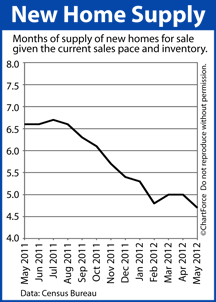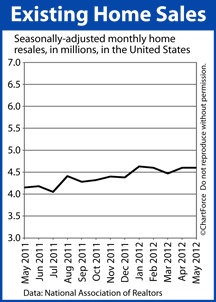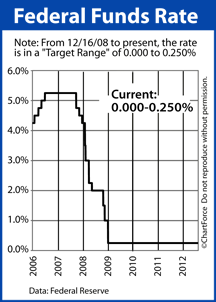 The new construction market continues to improve.
The new construction market continues to improve.
As reported by the Census Bureau, 369,000 new homes were sold last month on a seasonally-adjusted, annualized basis. A “new home” is a home that is considered new construction.
May’s data marks the highest number of new homes sold since April 2010, the last month of that year’s federal home buyer tax credit.
It’s also a 14% increase over the rolling 12-month average.
The news was somewhat expected based on the most recent Homebuilder Confidence survey, which rose to a 5-year high. Home builders have been reporting higher sales volume and rising buyer foot traffic since October of last year.
The May New Home Sales report confirms what builders already told us.
Furthermore, new homes are selling more quickly than builders have built them, lowering the national “home supply” to levels not seen since October 2005. There are currently 145,000 new homes for sale.
A supply of 6.0 months is believed to represent a market in balance. Anything less connotes a “sellers’ market”. At the current pace of sales, the entire new home housing stock would be exhausted in 4.7 months.
The South Region continues to account for the majority of new construction sales, posting a 55% market share in May. South Region sales were up 13 percent as compared to April. The other 3 regions turned in mixed results :
- Northeast Region : +36.7% from April 2012
- Midwest Region : -10.6% from April 2012
- West Region : -3.5% from April 2012
For all its strength, though, the Census Bureau’s New Home Sales data may also be “off”.
Although New Home Sales were said to rise by roughly 8 percent nationally from April to May, the government’s monthly report was also footnoted with a ±12.2% margin of error. This means that the actual New Home Sales reading may have been as high as +20% last month, or as low as -4%. The values could be positive or negative — we can’t know for certain.
However, that’s not to say that the New Home Sales should be ignored.
Longer-term, new home trends have been positive and builder confidence survey suggests the same. If you’re in the market for new construction in Cincinnati , you may want to go into contract soon. Home prices and mortgage rates remain low — a terrific combination for today’s home buyers.
 Home resales slipped last month; a slight setback for the nation’s housing market’s recovery.
Home resales slipped last month; a slight setback for the nation’s housing market’s recovery. Mortgage markets worsened last week as Greece tentatively
Mortgage markets worsened last week as Greece tentatively 